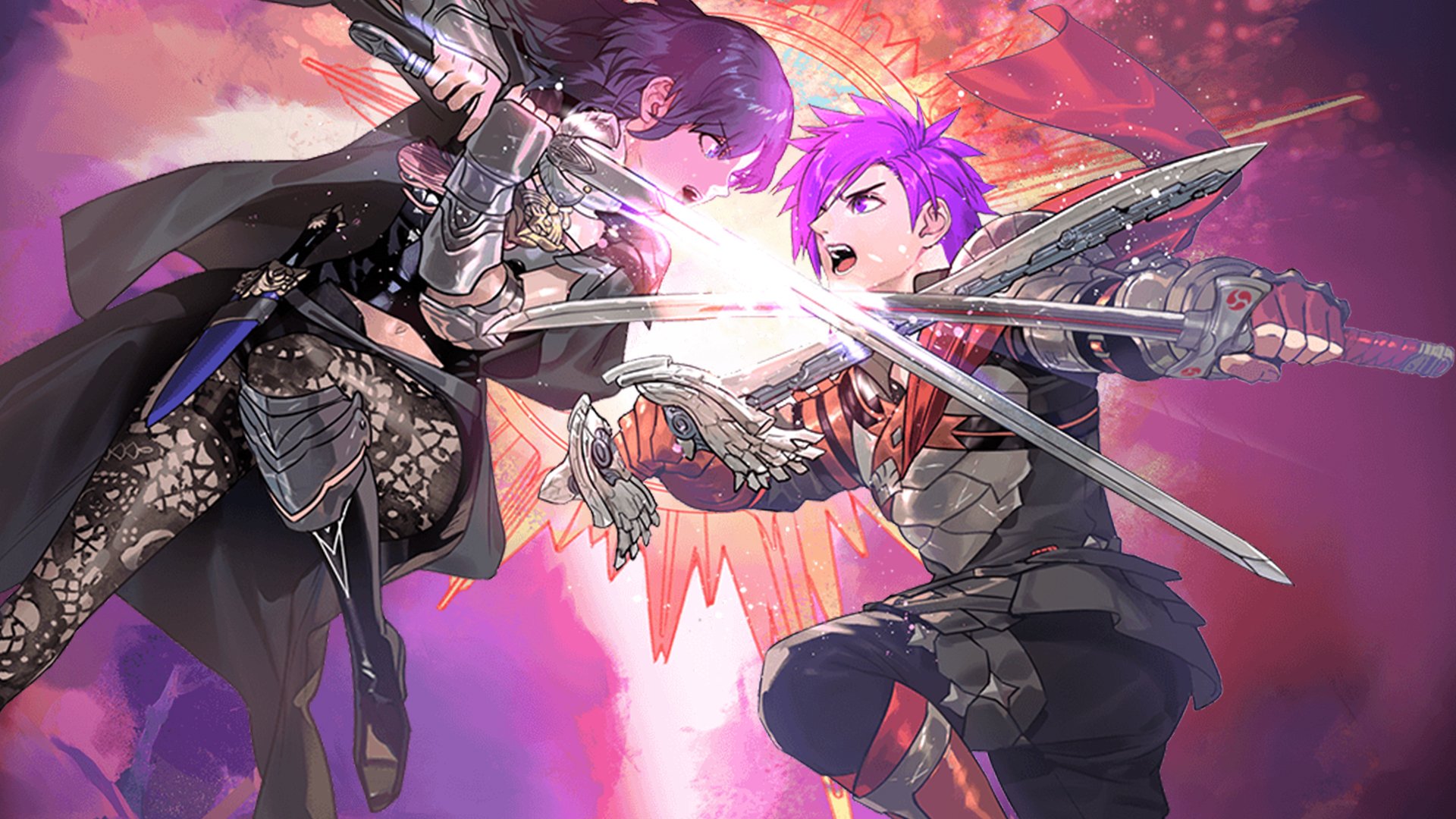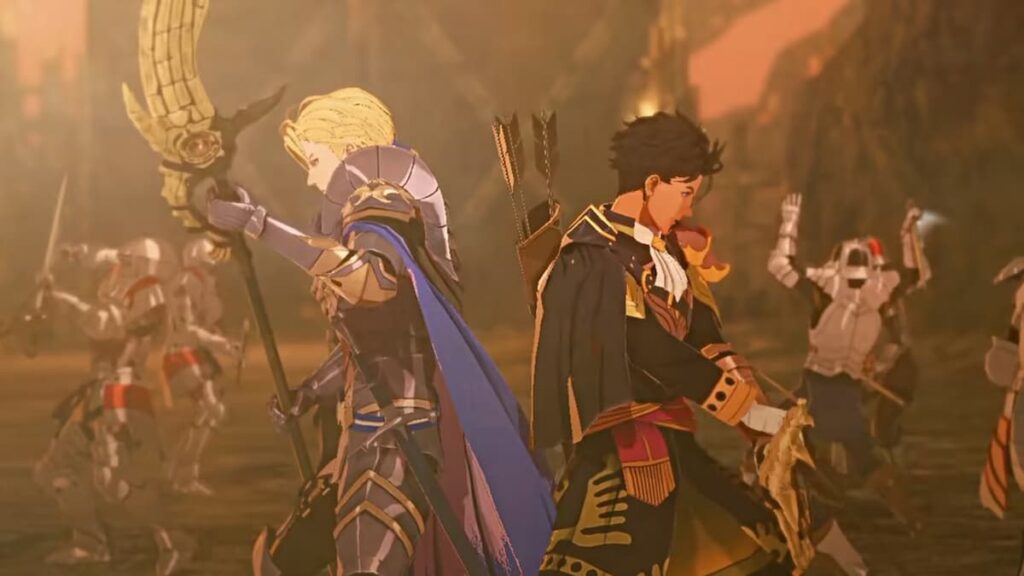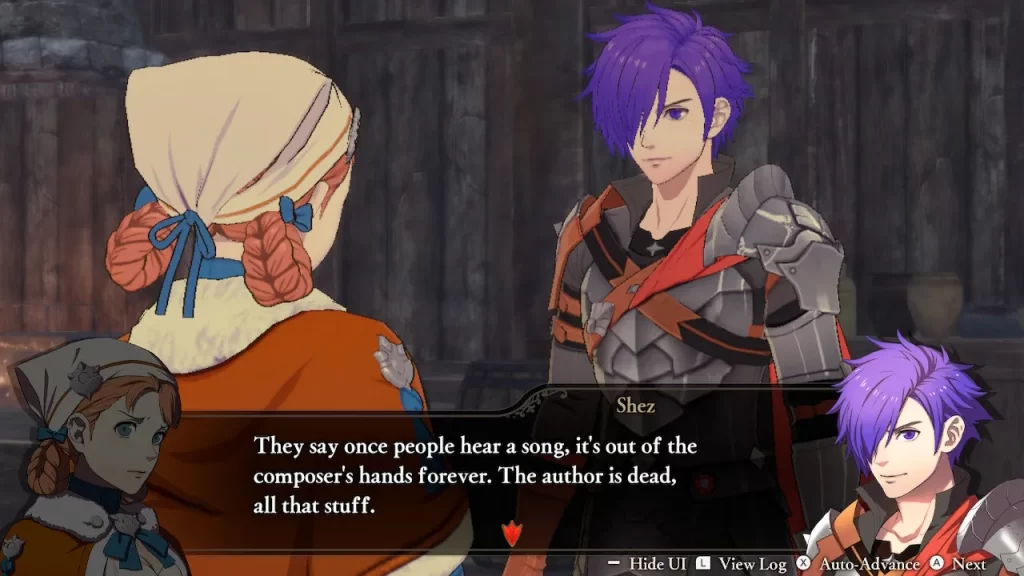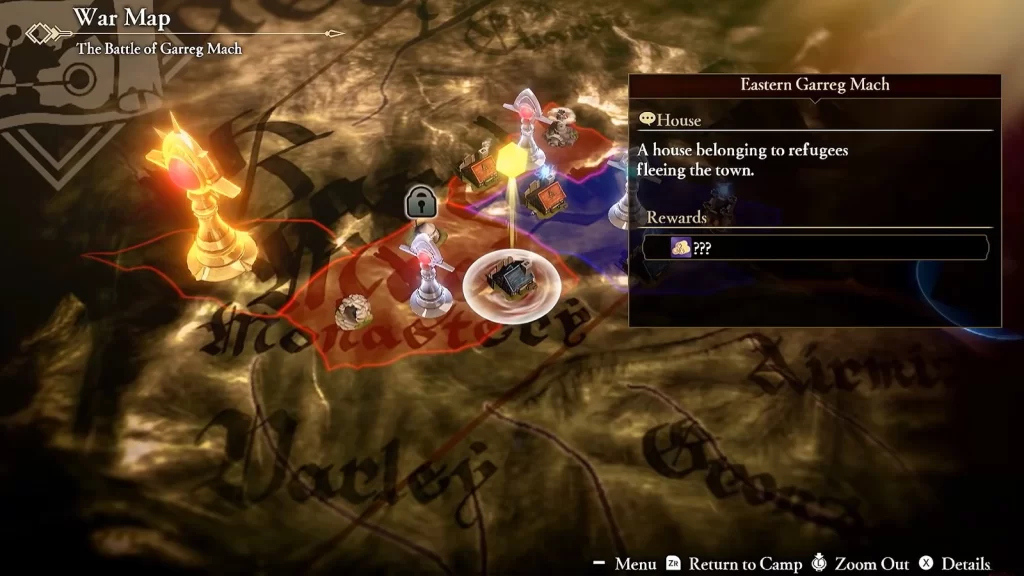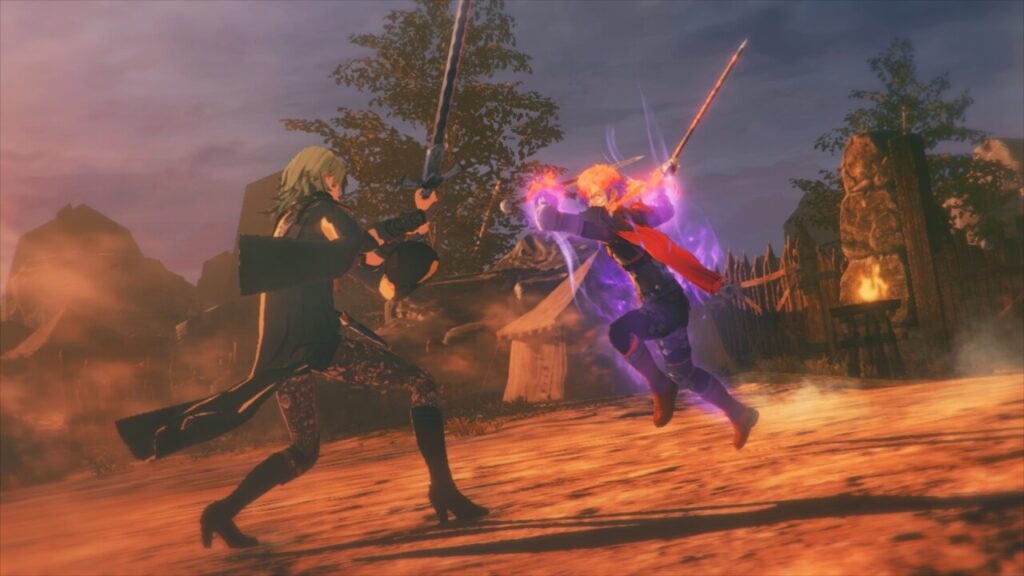Title – Fire Emblem Warriors: Three Hopes
Platforms – Nintendo Switch
Release Date – June 24th, 2022
Developer – Omega Force
Publisher – Nintendo
MSRP – $59.99
ESRB – T for Teen
Disclaimer – This product is being reviewed on the Nintendo Switch A review copy was provided by the Gaming Instincts staff for the purpose of this review. This review may also contain spoilers for certain gameplay and story elements. Watch at your own risk, you have been warned. Gaming Instincts is an Amazon Affiliate and does gain financial benefits if you choose to purchase this product on this page.
Fire Emblem Warriors: Three Hopes is the series’ second foray into the hack-n-slash space with the Fire Emblem IP, following up on its predecessor, Fire Emblem Warriors 2017. Thanks to developer Intelligent Systems’ partnership with Koei Tecmo in developing Fire Emblem: Three Houses, this “crossover” seemed inevitable.
Unlike the first spinoff, which featured its own unique setting and characters (on top of a smattering of popular ones), Three Hopes sees players return to the world of Fodlan, the continent of the Three Houses, arguably one of the hottest games in the franchise, making this game a complete retelling of Three Houses through the lenses of a different protagonist and genre.
As such, when it comes to a genre shift for a series so entrenched in a single one, Three Hopes tries its best to offer frenetic “Warriors” action and the series’ hallmark strategy in the same package. How well does it balance this act?
The Story of Three Hopes
Perhaps the best selling point of Three Hopes was its purported retelling of Three Houses and its events, offering a dynamically and dramatically shifted timeline to the one that plays out in the latter, multiplied by three.
Without delving into spoiler territory, the prologue of Three Hopes acts like the opening chapter of Three Houses, but it doesn’t linger in familiar territory for long. Thankfully, unlike Three Houses which spent a good half of every route going through the same motions and events with the different leads at the helm, Three Hopes jumps straight into the action based on the lord the player chose.
Once the opening act ends, the dynamically different routes begin, lending well to replayability and leaving barely any overlap. I will not be revealing any plot beats in this review, but the paths players choose will shed light on events, history, and characters that Three Houses routes may not have been able to in some regards, so there are things worth gleaning while playing. Three Hopes does a great job at fleshing out the world of Fodlan and beyond even further than before through dialogue, support conversations, and critical story moments.
Perhaps the biggest surprise to me in all of this was the new protagonist, Shez. Usually, filling in the shoes of a previously established protagonist is an uphill battle, leaving many would-be protagonists dead on arrival in their Sisyphean task. However, making Shez the protagonist and making the previous protagonist, Byleth, the antagonist does wonders for both of their characters. Giving the protagonist a speaking role makes them a likable, if not relatable, lead character, even if they are a bit dorky at times. There are real gems of dialogue within the support conversations, one of Fire Emblem’s defining features, that won Shez over for me.
Also, letting Byleth be their own character (with a voice) made me enjoy their presence in the story a lot more. If Three Houses had this kind of protagonist treatment, the characters would have been more well-received.
What isn’t utilized as well is the support system. It feels neutered for a Fire Emblem game, especially when compared to Three Houses. Characters outside the player avatar only have a handful of conversations and even fewer with new character combinations. On top of this, the support system is tied to in-combat bonuses depending on the rank players reach. A good chunk of characters only has a C-Rank with each other, the lowest possible rank, which limits what combination of characters players can field at a time while maintaining unit cohesion. These two things should have ultimately been kept separate.
Even though I’m glad it exists, the support system suite in Three Hopes mostly feels like a missed opportunity in many regards.
As for the plot of the game itself, enjoyment ultimately hinges on how much players are invested in the routes and characters they choose. Three Hopes is a massive step up from the previous Fire Emblem Warriors game in terms of writing and story, but, at the end of the day, it’s a Musou game with Fire Emblem elements. It does a great job with the medium and genre it inhabits in the story department, but it doesn’t break major boundaries for the series, outside of creating an enjoyable, new protagonist.
The pacing of the story, however, is another story altogether, and it’s mainly affected by the next part of the review.
Resource Gathering Galore
“Warriors” games follow a simple, if grindy, formula: deploy your units on a battlefield, conquer enemy strongholds, complete mission objectives, and tidy up the mission within the time/damage limit.
Three Hopes kicks this formula up a notch thanks to its utilization of core Fire Emblem elements, and it is all for the better. Button mashing may allow you to brute force your way through most missions, but putting some of your gray matter to use is the ultimate way to prevail in Three Hopes’ multifaceted campaign.
Players’ strategies are tested in two major, and distinct, areas: combat and unit/base development.
In every chapter, players must conquer a set region on the map of Fodlan with the “limited” resources and units at their disposal. The regions are divided into separate sections, each indicated by their defining battle. Once these battles are taken care of, areas of interest appear within the recently conquered zone, offering players resources, special battalions, and other neat perks. Some areas need players to reach certain criteria to become available, requiring finesse when tackling those particular regions. Others even offer unique “Strategies” and “Strategy Points” which are new mechanics in Three Hopes. Using these, players can persuade enemy commanders to defect to their side, boost healing, or reinforce strongholds in the final battle for each region.
These resources are vital for the “Development” side of gameplay, where players must allocate resources to their base camp for much-needed quality-of-life bonuses, upgrades, and more. As they progress, more powerful and useful upgrades will manifest with heftier costs, encouraging vigilance on player decisions. The more upgrades players purchase, the better rank their base will have; a higher ranked base camp comes with more activity and training points to deepen bonds with characters and further their class training, which were key mechanics in Three Houses.
Thankfully, the game is not stingy with materials and resources, provided the player advances the story along, giving enough necessary components for most players to reach an S-Ranked camp by the game’s halfway point. So, don’t try to grind the starting levels for smithing stones and the like. While certainly possible to do, it’s not worth it and turns the game into a chore. I did this. I would know. Don’t do what I did.
The upgraded perks make the next portion of the gameplay easier as they expand (and improve) the way players can approach a Warriors game’s most defining feature: combat.
Blending Strategy with Real-Time Hacking and Slashing
It is not a Musou game if the hacking and slashing weren’t streamlined to a T. What makes Three Hopes stand leagues above its predecessor is not the hack’n’slash combat alone but how it’s elevated by being built around core Three Houses and Fire Emblem concepts, like combat arts, the weapons triangle, and unit reclassing.
The latter of these concepts is what makes combat in Three Hopes so special. Unit reclassing has always been a major component of player progression through a Fire Emblem campaign. The further they pressed along and raised their units, the more experience they would gain, enabling them to upgrade to more powerful, higher-tier classes. Three Houses revolutionized this concept by allowing any character to re-class into any role the player saw fit.
Want to turn the exceptionally frail mage girl into a sword-wielding assassin? Go for it. Want to have that burly, mountain of a man with biceps the size of tree trunks twirl with the grace of a tome-toting magician? Knock yourself out. Are any of these optimal? Probably not, but why should that stop you?
The player’s barracks are limited only by their imagination. The sky’s the limit.
Having this level of freedom and expression replicated in a game like Three Hopes is immensely appreciated. It allows players to field their favorite characters in whatever capacity they want. In fact, it’s even encouraged.
Some characters, depending on their crests, can learn hidden skills if the player experiments deep enough with certain classes and the right equipment. The developers showed incredible foresight in designing the characters, and that’s something that deserves recognition.
While some may say universal re-classing can diminish uniqueness amongst the playable characters, they can all be re-classed into almost anything, each character comes with a class-line that they are most suited to, coming complete with unique outfits and personal animations for special attacks when players input them. So, lack of uniqueness isn’t an issue to contend with.
Speaking of special attacks, they are the game’s bread and butter, coming in three distinct flavors: combat arts, stun-gauge breaks, and Warrior Specials.
The main goal in combat, outside of utterly annihilating mooks, is to take down key targets on the battlefield. The fastest way to fell opponents is to target their stun-gauge. When an enemy is hit by a particularly effective attack or hit at the right time, a gauge with the design of a shield will appear. If the player administers enough damage within the set amount of time, the opponent enters a stunned state, allowing players to press ‘X’ and deal a massive burst of damage to the foe as well as any unfortunate goons caught in the crossfire.
This process is expedited by the use of combat arts, which are class, character, and weapon-specific special attacks players can perform, intricate combo strings based on the character players are using, or a combination of the two.
A hack’n’slash game with no sense of rhythm or heft behind its myriad of attacks gets stale and repetitive fast. Luckily in Three Hopes’ case, when coupled with the aforementioned universal re-classing, it’s anything but.
Every class has its own unique set of combos players can come up with, performed by mixing a combination of a series of light attacks and a heavy attack finish. A class like the swordmaster deals with rapid slashes and special timed inputs to extend sword combos while a wyvern lord specializes in dishing out massive pain over a wide area. Combine that with unique passives and abilities ALL characters innately possess and it creates layers upon layers of vastly different ways to approach all combat engagements.
Thanks to special-canceling, there are rarely any hiccups or hurdles amidst combos as players dish out electrifying numbers of damage dealt. It keeps the pace of combat constantly flowing, and with the ability to issue orders to allies and switch to said allies on the fly, very little time will be wasted on the battlefield.
What does suffer in pacing is the story.
All chapters function exactly the same way. Players must carve a path along the region map to the final battle in each chapter to progress the story. Outside of this final battle, every battle that comes before it severely lacks plot-related stakes or development. Outside of the brief battle excerpt players can read before entering the battle, these fights themselves don’t outright progress the story in any meaningful manner. And, with how many players will have to play through towards the latter half of the game to advance each chapter, the time spent between meaningful story beats grows further and further apart, disconnecting them at times from what exactly might be happening to our band of heroes.
Players can choose to skip certain regions and head straight to the final battle if they methodically calculated a route that led them there in the least amount of battles, but doing so severs potential resources that are imperative to the base-building portion of the gameplay. Not actively improving the base camp can make future battle endeavors feel more monotonous as the player will lack the necessary upgrades that expand combat in meaningful ways.
As such, while the battles are fun to tackle, they hamper Three Hopes’ ability to tell a compelling, well-paced story due to how many there are in later chapters and how little they contribute to the storytelling. Gameplay should always be in service of telling the story, not diminishing it, especially in a series as dedicated to weaving and telling intricate and memorable tales as Fire Emblem.
What also gets in the way of this war story is how limiting the battles are when it comes to the number of units permitted per map. It’s a measly count of four. Though the final battle for each chapter allows the deployment of four more, they function as ally NPCs and are uncontrollable. Even then, having NPC allies whom you can issue commands to makes the battle feel much more significant and, well, big. There’s a freakin’ war going on after all. It feels strange to commit to the battlefield with such a small force most of the time.
Outside of these gripes, the combat is more than serviceable and a blast to sit through and optimize.
Visual Bleh but Auditory Treat
It’s a game on the Nintendo Switch, a five-year-old console that can’t decide which generation it wants to belong to. Expecting visuals that’ll blow your pants off is a pipe dream. The game struggles to maintain 60 frames in almost all areas, and any areas that do hit 60 FPS are running at a lower resolution, which is more than evident during combat. Throw enough particle effects and entities on-screen during combat, and you will see some slowdowns.
Character models are saved by the art style. Textures and animations (outside of combat) are stale and not very pleasing to the eye.
Surprisingly, load times are pretty quick, unlike in Three Houses, taking no longer than five to ten seconds. For my first-gen Switch, that’s a pleasant surprise, and I’ll take my wins where I can.
What isn’t surprising is the stellar soundtrack. Fire Emblem is well renowned for its killer and memorable tracks and compositions. Three Houses had some of the best music the series had to offer, and Warriors takes it up a notch by adding new notable tunes of its own while giving fan favorites a rock/metal makeover. With how frenetic and high-energy the combat sequences tend to be in Three Hopes, it’s a wonderful accompaniment that elevates the experience.
What’s also cool and worth mentioning is how seamless the music is, transitioning to a calmer, subdued version on the battle map menu and how it ramps up as soon as the player returns to the fray.
The visuals may not be anything to write home about but you’ll absolutely stay for the music.
In Conclusion
Fire Emblem Warriors: Three Hopes surprised me in many ways. It made me enjoy what I once thought was a monotonous hack’n’slash romp and it made me grow attached to a new protagonist with a stupid name.
At the same time, it let me down in other ways. The support, while having some really great content and conversations, made me ache with how little it gave. The story, while intriguing and engaging, had its pacing all over the place.
It straddles along a thin tightrope, trying to balance all of its key elements without spilling too much into one side. While it may have succeeded in formulating a genuinely gratifying and enjoyable Musou experience, it left me wanting more out of its Fire Emblem roots.
Fire Emblem Warriors: Three Hopes may not have been the game I hoped it would be, but it’s one that keeps my hopes up for any future spinoff titles. After all, it’s leagues above its predecessor.
DLC can’t come soon enough.
Gaming Instincts will be giving Fire Emblem Warriors: Three Hopes an 8.0 out of 10.
Stay tuned at Gaming Instincts via Twitter, YouTube, Instagram, and Facebook for more gaming news.



